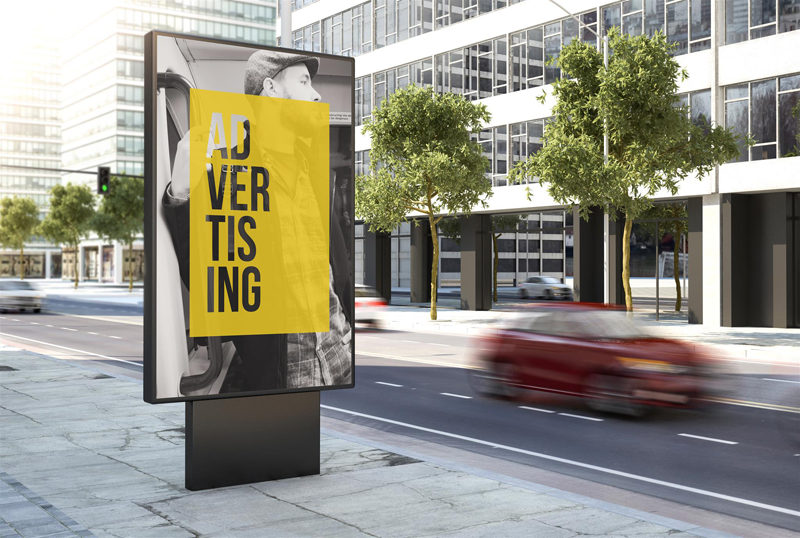The power of display advertising
Display advertising may seem like just more marketing jargon. It is like one of those terms you say over and over and begins to lose its meaning. People recognise that display ads are paid for advertising moments on the internet. They do not attempt to hide themselves seamlessly within content, like native advertising. Although native advertising is thought to be less disruptive to the digital experience of the user, display ads are an accepted part of the experience of the user and are more likely to speak directly to the audience and hook them into clicking.
There are some general rules of thumb in display advertising. For instance, taller more narrow display ads perform less well than wider banner ads. Google claim the most effective display ads come in 336×280 or 300 x 250 pixel rectangles. Those adverts that act as videos that start as the page loads is seen to be the most disruptive to the experience of the user, and the best advice is to use the politer mouse roll-over content. The interstitial advert that is a full page pop up that needs to be clicked to disappeared is also thought to be an effective display ad. It is even better if these ads are transparent and the website can still be seen in the background.
But, display advertising is more an art than a series of general rules. It is the mixture of knowing your audience, knowing your product and service and knowing how to make the ad so appealing that the user can’t help but click.
Display ads annoy the user – don’t they?
Yes and no. They are an expected evil and sometimes a welcome solution to a problem a user is facing. Display ads come with a list of benefits and consequences, as do all forms of marketing. The obvious downside to display ads is that they are disruptive of the user experience of the internet. The content of the display ad appears without the audience requesting its presence – therefore, it can annoy them, or it will be completely ignored.
However, display ads come in an array of formats, sizes and styles – which means you can fit your display ad to the goals of your marketing campaign and ultimately your business goals. Display ads also reach millions of people – just consider the reach of Google’s Display Network. This reach can be targeting so that the ads only appear on the screen of your preferred audience.
Another huge plus of display ads is that it is easy to monitor the impact of the marketing. You get a wealth of metrics on a single ads performance. You will be able to track the number of clicks, impressions and conversions – all of which is generated in real-time. This will help you begin to understand what is resonating with your customers at that moment in time – offering you the chance to maximise trends and issues.
Retargeting vs prospecting campaigns
The existence of prospecting campaigns and retargeting campaigns is a representation of the complexity of any company’s sales funnel. The customer rarely takes a straight line to custom with your brand, especially the much hoped for life-long customer that sustains businesses. Prospecting campaigns aim to capture new customers and drive new people to the website. Retargeting is the art of getting back that customer that has shown some interest but for some reason has clicked away.
Your prospecting campaign will draw your customers to your landing page, where you hope they convert but in all likelihood they won’t. Your retargeting ad will aim to get them to click back again, reengaging that initial interest that the customer showed. Retargeting ads will only be shown to people who have previously visited your site – they can also be so targeted that the ad changes depending on what pages your potential customer visited. And for this reason alone, it is likely that you would gain more traction with display ads in an attempt to retarget your audience back to your site.
Prospecting campaigns are too wide a net for display ads to get noticed. This means that you want people to be so captured by your display ad copy that they click-through, even if they have shown no interest before – which feels unlikely at best. As display ads are some of the easiest marketing devices for the audience to ignore, it is likely to have only minimal impact on potential new customers.
However, if you plant a retargeting pixel onto your visitor’s computer, then you can follow them as they move away from your site. You want them to remember why they chose to click through to your site in the first place, and potentially you want to give them an incentive to return. A display ad offers the perfect chance to hook the customer back in with an offer or a call to action, which makes it essential they finish the business they started with you. As they have recently visited your site, they are more likely to be cognisant of the display ad on the screen – much more so that the prospective customer.
The only danger of retargeting ads is that the user can feel “stalked” around the internet. Some users may argue it is the equivalent of the sales man in the shop following you to the door to offer you one last deal. However, with a clever display ad that responds to the clicks the customers’ made whilst engaging with your site can make it easier for the customer to think again and convert the sale they initially began.
Overall
Display ads can be successful in prospecting campaigns and as a retargeting tool. The potential for success in display ads comes down to some essential ingredients. First, you need to use high quality images, you need to link to relevant landing pages that relate to the hook in the display ad, you need to personalise the message – which is easier when retargeting – and you need to keep your eye on the metrics and keeping testing out new messages.






